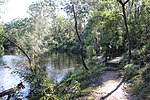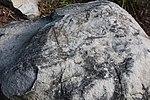West Killara, New South Wales
West Killara is a locality in the suburb of Killara, a suburb located on the Upper North Shore Sydney, in the state of New South Wales, Australia. It is located 14 kilometres north-west of the Sydney Central Business District in the local government area of Ku-ring-gai Council. West Killara is bounded on the north and east by Lady Game Drive, to the south-east by Fiddens Wharf Road and to the south and west by the Lane Cove River and Lane Cove National Park. West Killara has no shops but is close to a small shopping area in Moore Avenue, Lindfield. A bus service runs to Lindfield railway station. Beaumont Road Public School, a government primary school located in Beaumont Road.
Excerpt from the Wikipedia article West Killara, New South Wales (License: CC BY-SA 3.0, Authors).West Killara, New South Wales
Albert Drive, Sydney Killara
Geographical coordinates (GPS) Address Nearby Places Show on map
Geographical coordinates (GPS)
| Latitude | Longitude |
|---|---|
| N -33.77936 ° | E 151.14462 ° |
Address
Albert Drive 78
2071 Sydney, Killara
New South Wales, Australia
Open on Google Maps





